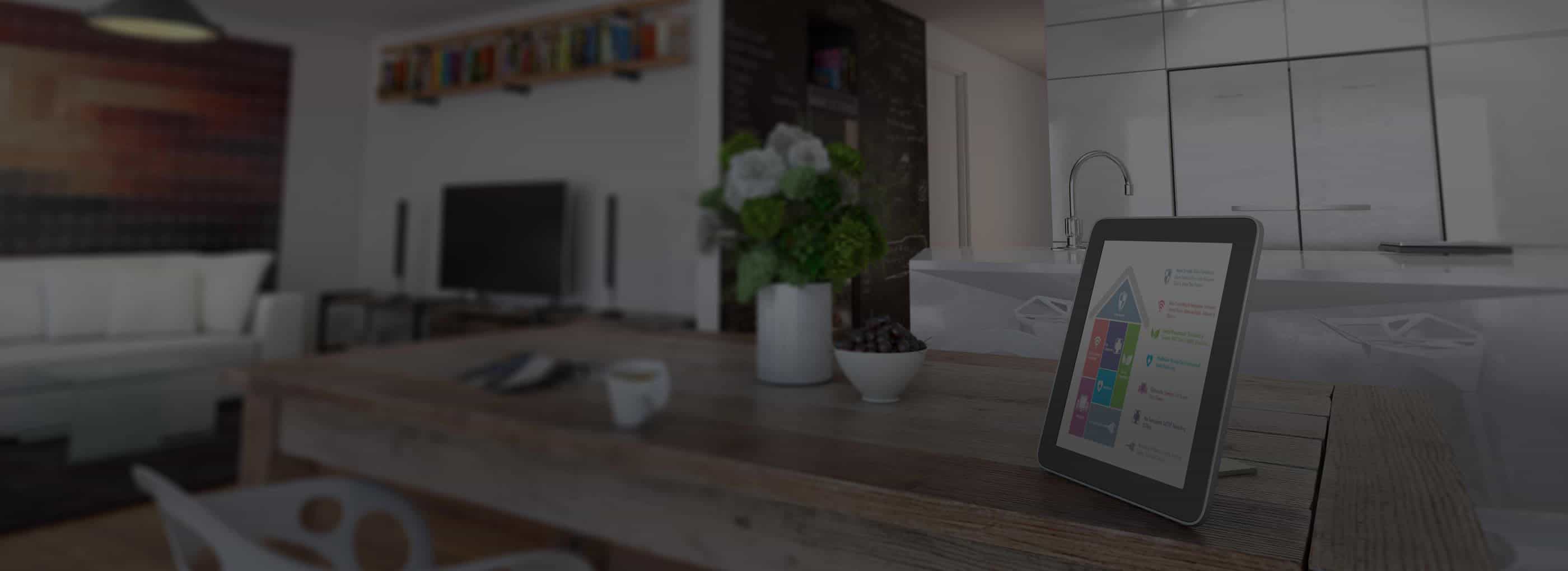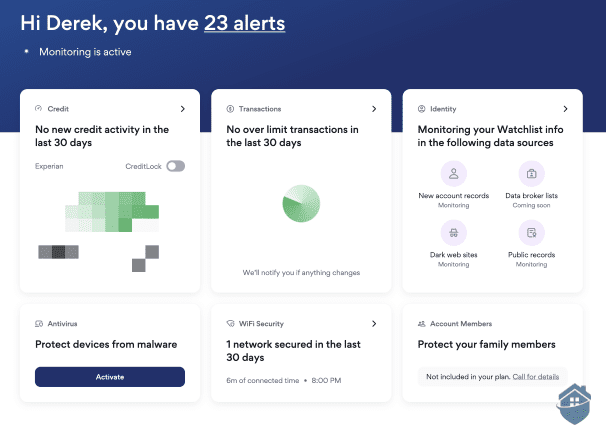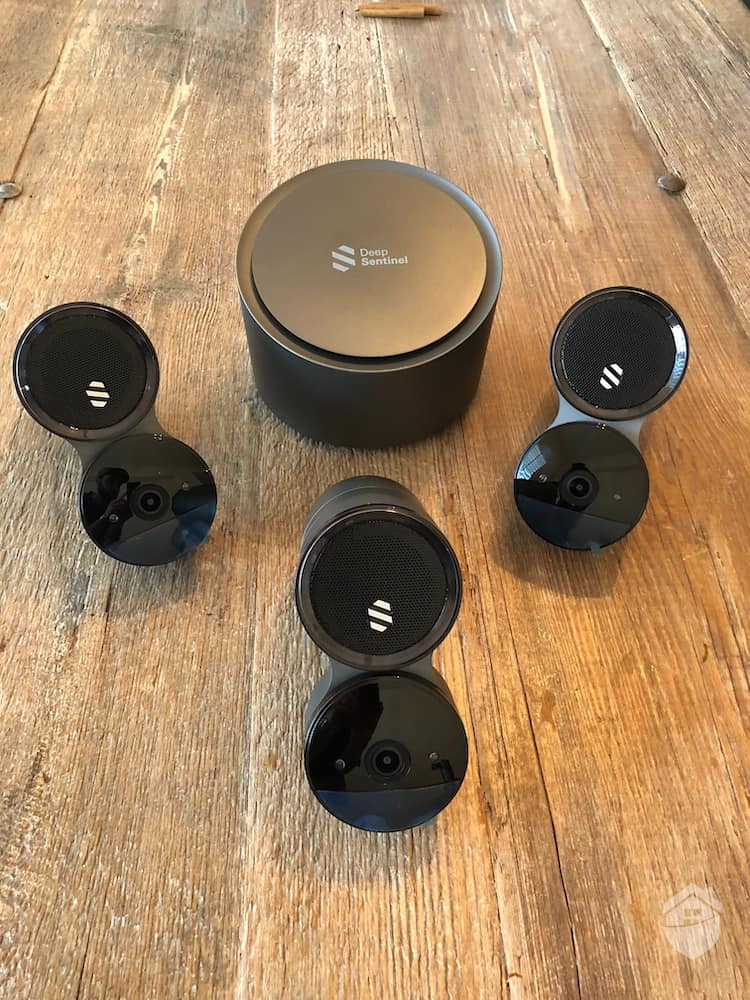Did you know one in four homeowners are living in multigenerational households?1 This arrangement offers financial benefits and stronger family bonds, but it also creates unique safety challenges. A home that’s safe for a healthy 40-year-old might pose serious risks to a 2-year-old or an 80-year-old with vision issues. The key is creating layered safety systems that protect everyone without compromising anyone’s independence or comfort.
We’ve researched and tested hundreds of safety products and consulted with home safety experts to create this comprehensive guide. Whether you’re planning a multi-generational move or want to upgrade your current setup, our recommendations will help you identify risks and put in place real solutions for every family member.
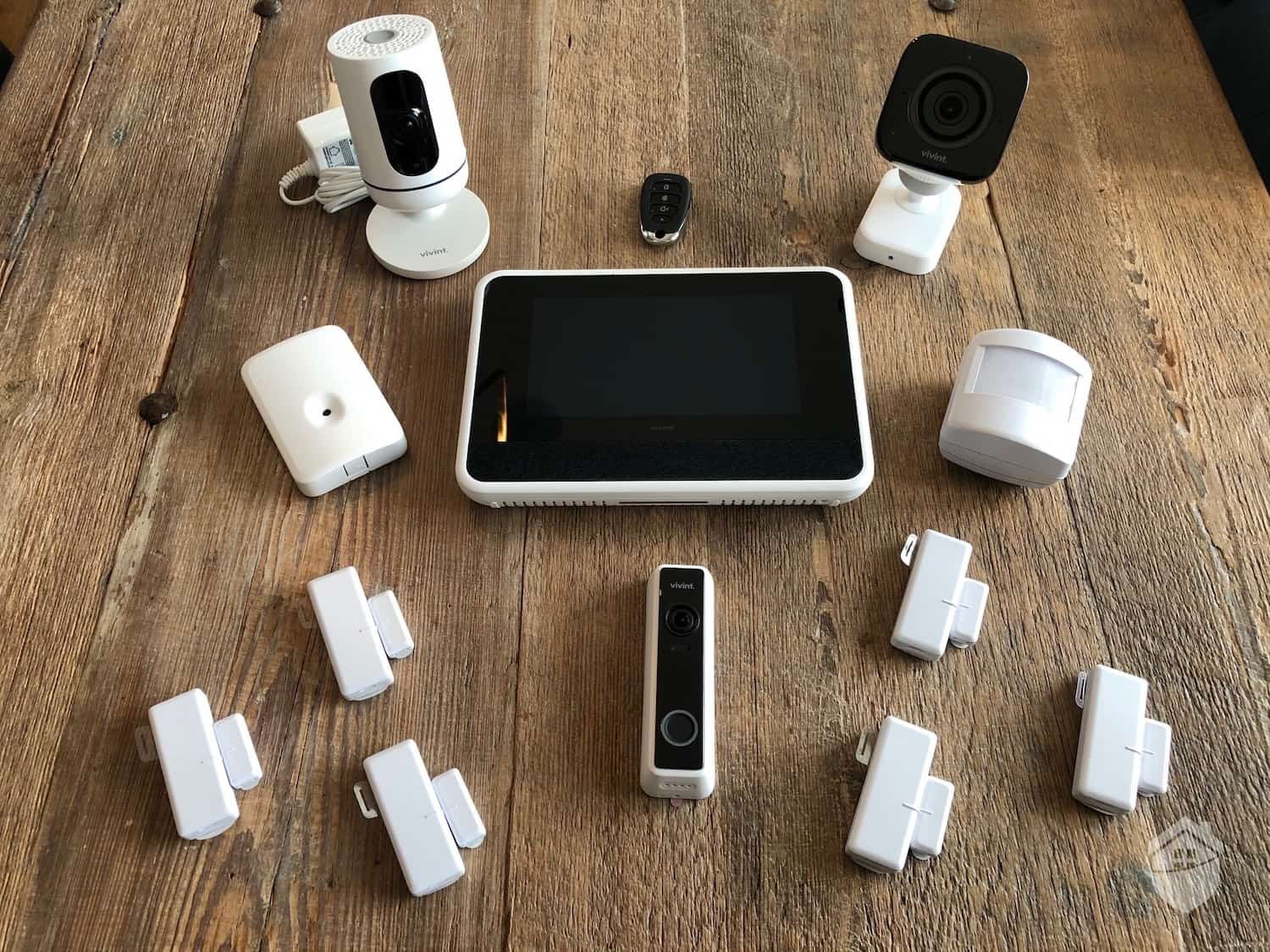
Security Systems like Vivint use the latest technology to keep everyone under your roof safe.
Understanding Multi-Generational Safety Challenges
Multi-generational homes face various safety challenges. For example, traditional child-proofing focuses on curious toddlers, while senior safety emphasizes fall prevention and medication management. When these needs overlap, they can sometimes conflict. Some of the most common safety conflicts include:
- Childproof locks that seniors with arthritis can’t operate
- Motion-sensor lights that startle elderly residents
- Safety gates that create trip hazards for those with mobility aids
- Emergency systems too complex for some family members to use
The Centers for Disease Control and Prevention reports that falls are the leading cause of injury or death for adults over 65, while injuries from accidents is the leading cause of death for children under four.2 These statistics highlight why multi-generational homes need comprehensive safety strategies.
Pro Tip: Start with a family safety meeting. Discuss each person’s specific needs, mobility limitations, and comfort levels with different safety devices before making purchases.
Entrance and Exit Safety
Your home’s entry points are the first line of defense and the most critical escape routes during emergencies. Multi-generational homes need entrance systems that balance security, accessibility, and ease of use.
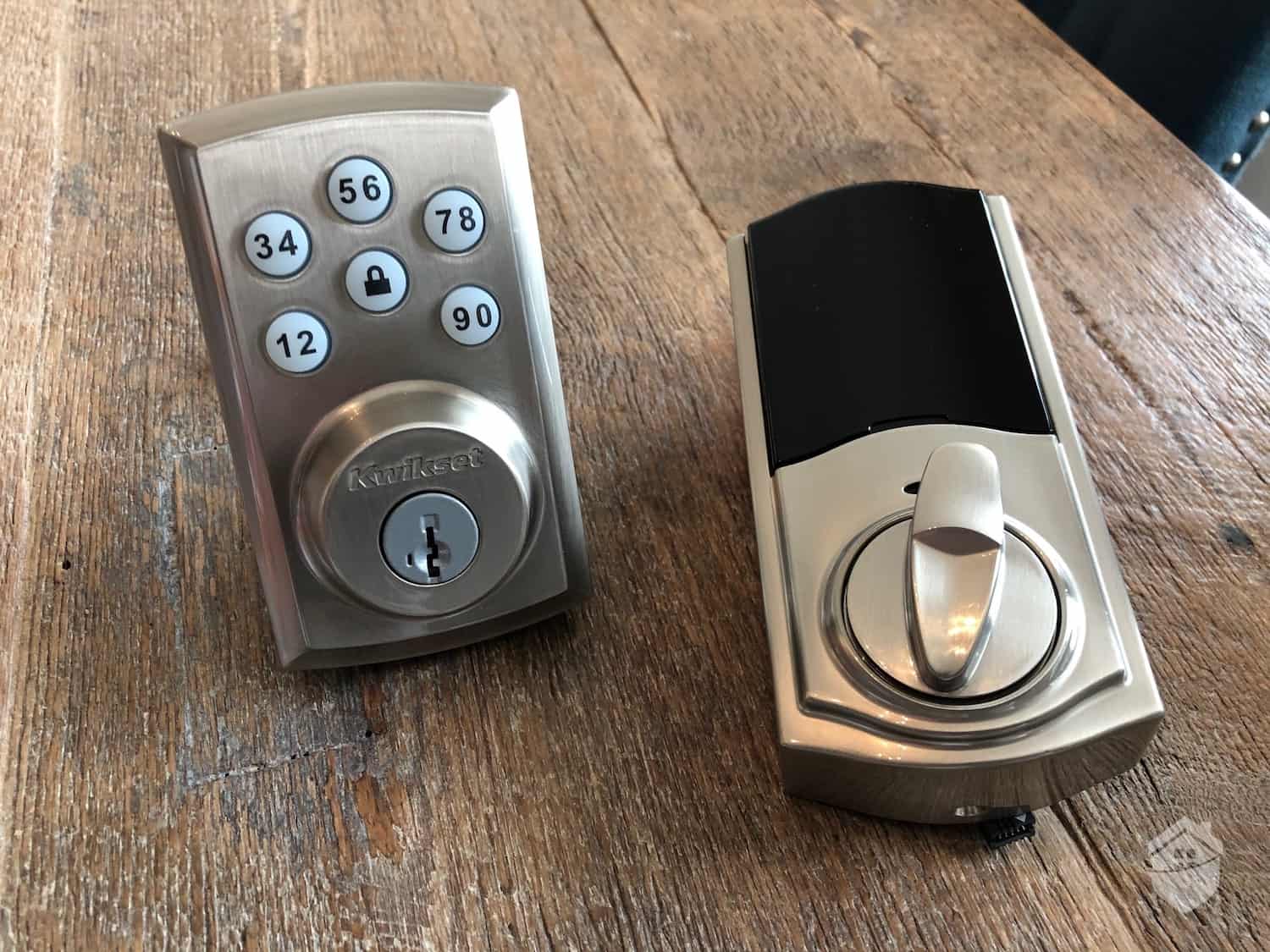
Some of the smart lock options we were offered from Vivint
Smart Lock Systems
We tested 15 smart lock systems and found the best options offer multiple access methods. We prefer keypads that use codes or smartphone apps. Others may choose to have traditional keys for backup access.
What we like about keypad entry:
- No lost keys to worry about
- Unique codes for each family member
- Temporary codes for caregivers or visitors
- Activity logs show who entered and when
What we don’t like:
- Some models have buttons too small for seniors with vision issues
- Battery failure can lock everyone out
- Complex programming intimidates some users
- Memorizing access codes can be challenging for older family members
For multi-generational homes, we recommend smart locks with large, backlit keypads and smartphone notifications when batteries run low. We also recommend models with mechanical key backup to ensure access even during electronic failures.
>> Keep Reading: The Best Smart Locks of 2025
Lighting Solutions
Adequate lighting can help prevent falls and help everyone navigate the house safely, especially during nighttime bathroom trips or early morning departures. Some lighting options include:
- Motion-activated pathway lights with adjustable sensitivity
- Backup lighting systems for power outages
- Soft nightlights in hallways and bathrooms
- Well-lit house numbers and entrance areas
We recommend minimum light levels equivalent to 20 foot-candles for areas where seniors walk regularly, such as the kitchen or bathroom.
Expert Tip: Install dual-level motion detectors. We set our motion sensors to low sensitivity for daytime to avoid false triggers and high sensitivity for nighttime for extra illumination.
Kitchen Safety Modifications
Kitchens present numerous hazards for both children and seniors. Hot surfaces, sharp objects, toxic cleaning products, and slip-prone floors create daily risks that require targeted solutions.
Appliance Safety
Modern appliances offer sophisticated safety features, but not all are suitable for multi-generational use. We found that the most effective kitchen safety comes from strategic appliance selection combined with aftermarket safety devices. Some cooktop features we recommend are:
- Induction cooktops reduce burn risks by only heating cookware
- Automatic shut-off features prevent forgotten burners
- Control locks prevent accidental activation by children
- Visual indicators show when surfaces remain hot
Storage and Organization
Safe kitchen storage requires balancing child-proofing with senior accessibility. Traditional solutions often create barriers for older adults with limited mobility or grip strength. We’ve tried multiple hierarchies, and this is the one we found works best:
- Top shelves: Rarely used items only
- Eye-level shelves: Daily-use items for adults
- Counter-height cabinets: Locked storage for hazardous items
- Lower cabinets: Child-safe items only
We recommend magnetic locks over traditional latches for cabinets containing cleaning supplies or medications. Magnetic locks don’t require grip strength to operate but remain completely inaccessible to children without the magnetic key.
Expert Tip: Use clear, labeled containers for medications and supplements. This prevents mix-ups while maintaining child-resistant closures that most seniors can still operate.
Bathroom Safety Features
Bathrooms account for numerous household injuries across all age groups. Wet surfaces, hard edges, and privacy needs create particular challenges in multi-generational homes.
Fall Prevention
Slipping in the bathroom is one of the most common causes of falls.3 Multi-generational homes need comprehensive fall prevention that doesn’t compromise the space’s functionality for any user. Some essential fall prevention measures are:
- Non-slip flooring materials with adequate grip
- Strategically placed grab bars rated for 300+ pounds
- Shower seats and handheld shower heads
- Adequate lighting with backup power sources
We tested grab bar installations in various bathroom configurations. We found that the most versatile solutions use reinforced mounting systems that work with both tile and drywall installations. Professional installation ensures proper weight ratings, which is critical when family members with mobility challenges depend on these supports.
>> Check Out: The Best Medical Alert Systems with Fall Detection
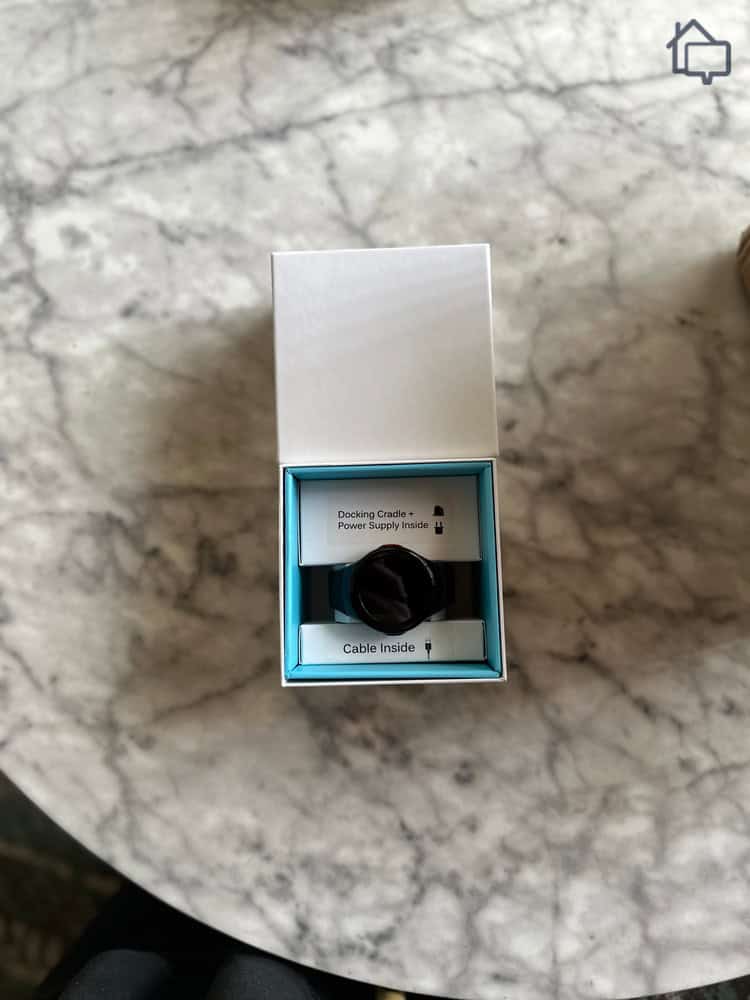
Waterproof medical alert systems are great for older adults in the bathroom and for young children who love to swim.
Water Safety
Multi-generational homes need water safety systems that protect against both scalding and drowning risks. Children face drowning dangers in as little as two inches of water, while seniors with decreased sensation may not notice dangerously hot water temperatures.
Water safety essentials we recommend:
- Anti-scald devices set to 120°F maximum
- Faucet covers to prevent injuries from sharp edges
- Toilet locks for homes with toddlers
- Emergency shut-off valves accessible to all adults
Expert Tip: Install water temperature indicators that change color when water exceeds safe bathing temperatures. These visual cues help family members with decreased temperature sensitivity.
>> Read More: Best Waterproof Medical Alert Systems
Stairway and Mobility Modifications
Stairs also present a significant risk in multi-generational homes. It’s not just older adults. Almost half of the falls among young adults are related to stair descent.4
Stair Safety Systems
Effective stair safety requires different approaches for different family members. Children need barriers to prevent unsupervised access, while seniors need support systems for safe navigation. We found that the most effective solutions offer multiple safety features without creating new hazards. Some of the features we recommend include:
- Pressure-mounted gates for temporary child barriers
- Hardware-mounted gates for permanent installation
- Dual-height handrails (standard and child-height)
- Non-slip treads with visual contrast strips
- Adequate lighting with motion activation
Safety gates present particular challenges in multi-generational homes. In our house, gates that children can’t open frustrate the older adults living with us due to their limited grip strength. We switched to gates with large, easy-to-operate latches and clear operating instructions.
Mobility Aid Integration
When family members use walkers, wheelchairs, or other mobility aids, standard stair safety measures may need modification. The key is creating solutions that accommodate mobility devices without compromising safety for other family members. Some modifications to consider are:
- Wider landings for maneuvering space
- Ramps with appropriate slope ratios (1:12 maximum)
- Stair lifts with safety sensors and backup power
- Clear pathways free from safety gates when mobility aids are in use
Expert Tip: Create alternative routes to second floors when possible. Many multi-generational families find it easier to relocate bedrooms to main floors rather than modify existing staircases.
Technology Integration for Safety
Modern safety technology offers sophisticated monitoring and alert systems, but keep in mind that multi-generational homes need solutions that everyone can understand and operate effectively.
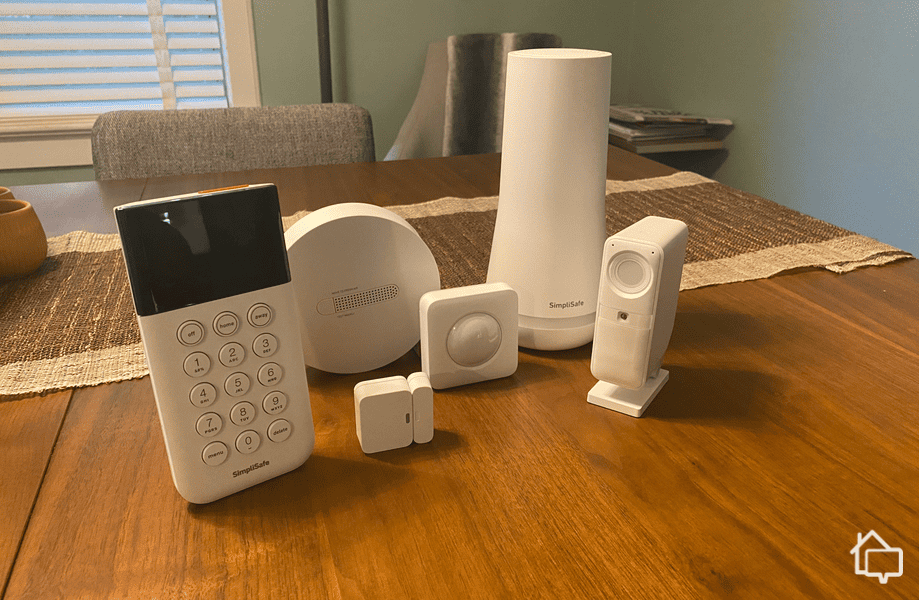
SimpliSafe’s security system is not only easy to install yourself, but simple for almost everyone in the family to use.
Security Systems
We tested multiple home security systems for multi-generational compatibility. The most effective systems offer simple operation for less tech-savvy family members while providing comprehensive monitoring capabilities. Some features we recommend are:
- Large, clearly labeled control panels
- Voice prompts for system status
- Multiple ways to arm/disarm (keypad, smartphone, key fob)
- Professional monitoring with medical alert integration
ADT and SimpliSafe systems scored highest in our multi-generational testing, offering intuitive operation and reliable professional monitoring services.
>> Compare: ADT Vs. SimpliSafe
Medical Alert Systems
Medical alert systems have evolved beyond traditional pendant-style devices. Modern systems integrate with home security and can detect falls automatically, but they require careful selection for multi-generational homes. We recommend considering:
- Automatic fall detection vs. manual activation
- Range coverage throughout the home
- Integration with existing security systems
- Multiple user capability for households with several seniors
Expert Tip: Test medical alert systems thoroughly before relying on them. In our hands-on assessments, we walk through the house while wearing devices to ensure coverage reaches all areas our family members frequent.
>> Find Out: The Best Medical Alert Systems of 2025
Emergency Preparedness Planning
Multi-generational homes need emergency plans that account for different mobility levels, medical needs, and decision-making capabilities. Standard emergency planning can overlook the complex logistics of evacuating or sheltering in place with family members of different ages.
Evacuation Planning
Effective evacuation planning requires multiple scenarios and backup options. What works for healthy adults may not work for family members with mobility limitations or young children. Essentials include:
- Primary and secondary escape routes from each room
- Meeting locations accessible to all family members
- Communication plans when family members are separated
- Transportation arrangements for those who can’t drive
We recommend practicing evacuation routes frequently and include scenarios where primary caregivers aren’t available to assist children or seniors.
Emergency Supply Management
Emergency supplies for multi-generational homes require more planning than single-demographic households. Medications, special dietary needs, and mobility equipment all need consideration. Supply categories for multi-generational homes include:
- Medications (prescription and over-the-counter)
- Special dietary requirements (baby formula, diabetic foods)
- Mobility equipment (extra batteries, backup devices)
- Communication devices (weather radios, charged phones)
- Comfort items (familiar objects for children and seniors with dementia)
Expert Tip: Rotate emergency supplies every six months and involve all capable family members in inventory management. This ensures everyone knows where supplies are located and how to access them.
Professional Safety Assessments
While many safety improvements can be DIY projects, multi-generational homes benefit from professional safety assessments. Certified aging-in-place specialists and child safety experts can identify risks that families might overlook.
When to Call Professionals
Professional assessments become particularly valuable when family needs change—after injuries, new diagnoses, or when new family members join the household. Other indicators that you need to engage a professional are:
- Recent falls or injuries in the home
- New mobility limitations for any family member
- Medication management concerns
- Complex medical equipment installation needs
Certified Aging-in-Place Specialists (CAPS) receive specific training in multi-generational safety challenges and can provide comprehensive assessments that address everyone’s needs.
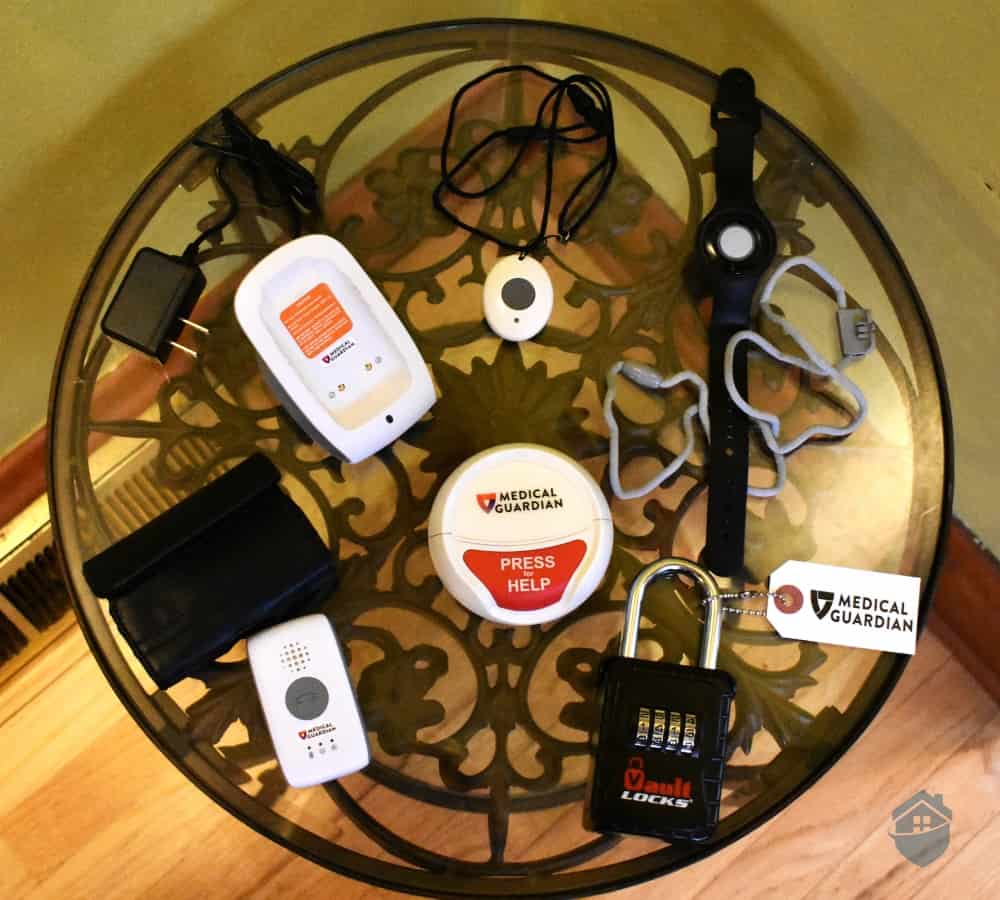
Medical alert systems come in different shapes and sizes to suit any family member’s preferences.
Maintenance and Updates
Safety systems require ongoing maintenance to remain effective. Multi-generational homes need maintenance schedules that account for different family members’ abilities to perform safety checks. We recommend creating monthly, quarterly, and annual maintenance schedules that distribute tasks among capable family members.
Monthly safety checks should include:
- Test smoke and carbon monoxide detectors
- Check grab bar stability
- Inspect stair railings and safety gates
- Update emergency contact information
Quarterly maintenance should feature:
- Deep clean non-slip surfaces
- Check security system functionality
- Review and practice emergency plans
- Update emergency supply inventories
Annual assessments need:
- Professional HVAC safety inspections
- Electrical system safety checks
- Comprehensive security system updates
- Family safety needs reassessment
Keeping Everyone Safe
Creating a safe multi-generational home requires thoughtful planning, quality products, and ongoing maintenance. The key is understanding that effective safety systems protect everyone without limiting anyone’s independence or comfort.
And multi-generational safety is an ongoing process, not a one-time project. As family members age and children grow, safety needs will evolve. Regular assessments and updates ensure your home remains a secure environment for everyone.
Remember to involve all capable family members in safety planning and maintenance. When everyone understands and participates in home safety, the entire household benefits from increased awareness and shared responsibility for maintaining a secure living environment.
Frequently Asked Questions
- How much should I budget for multi-generational safety improvements?
Basic safety improvements typically cost $2,000-$5,000 for essential modifications like grab bars, lighting, and security systems. Comprehensive renovations including accessibility modifications can range from $10,000-$25,000.
- Can I install most safety features myself, or do I need professionals?
Many safety devices like cabinet locks and nightlights are DIY-friendly, but grab bars, electrical work, and structural modifications require professional installation.
- How do I choose safety products that work for both children and seniors?
Look for products with multiple operation methods, clear visual indicators, and adjustable settings. Test products with all family members before making final installations.
- What's the most important safety upgrade for multi-generational homes?
Comprehensive lighting systems with backup power sources address the widest range of safety concerns. Good lighting prevents falls, aids navigation, and helps during emergencies.
- How often should I update our family emergency plan?
Review emergency plans every six months or whenever family circumstances change. Practice evacuation routes monthly and update contact information quarterly.
- Are smart home safety systems worth the investment for multi-generational homes?
Yes, when chosen carefully. Smart systems offer monitoring capabilities and remote management that benefit multi-generational families, but ensure all family members can operate basic functions independently.

